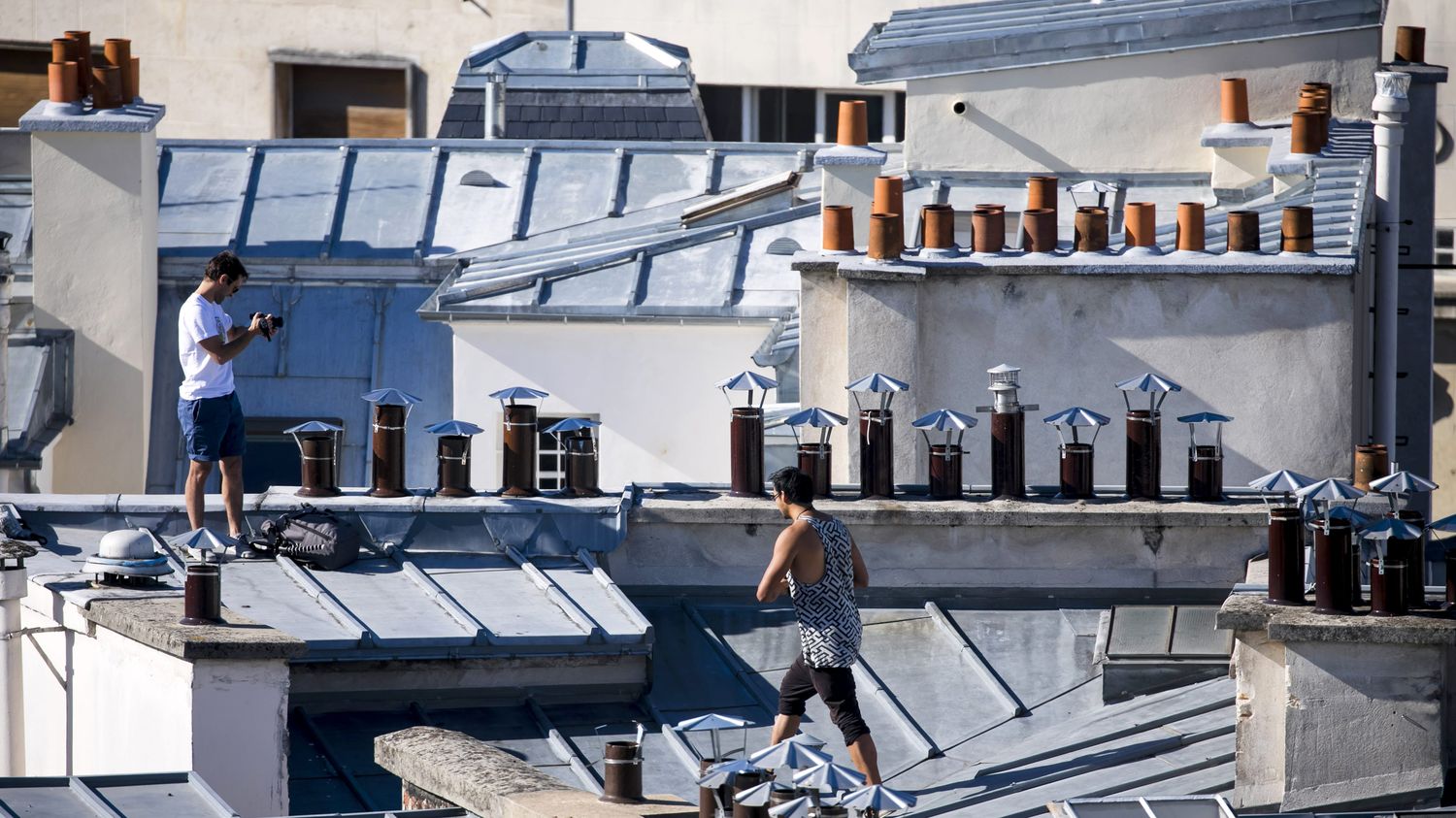The Ministry of Culture has selected the zinc roofers’ file as France’s choice for UNESCO’s intangible heritage, on the occasion of the session scheduled for next December in Paraguay. A recognition hoped for for at least ten years. Some 67 files will be in the running.

Published
Reading time: 3 min

Will the zinc roofers of the famous roofs of Paris finally be recognized as UNESCO’s intangible heritage? With their shades of gray and their strange chimneys, the roofs of the capital and the craftsmen who shape them would like to join UNESCO to promote an ancient profession, forced to adapt to climate change.
The winners for 2024 are to be announced next December in Asuncion, Paraguay. To represent France, the Ministry of Culture has selected the application of zinc roofers. A total of 67 applications will be in the running. The application aims to showcase the expertise of French zinc roofers and ornamentalists – the craftsmen who make portholes, dormers and ridge ornaments – who designed the very special architectural identity of the French capital almost 200 years ago.
“Paris seen from above, you can see that we are not in another city”, marvels Delphine Bürkli, mayor of the 9th arrondissement. She is at the origin of the French candidacy and had proposed in 2014 to register the roofs of Paris as a UNESCO world heritage site (like the Taj Mahal or the banks of the Seine). The fight is therefore old. But since then, the project has evolved. It was “very complicated”, explains Gilles Mermet, coordinator of the UNESCO application. Paris has 128,000 roofs covering a total surface area of 32 million m2, including 21.4 million m2 of traditional roofs made of zinc and other materials, according to the Paris Urban Planning Workshop (Apur).
The classification project has lost the support of the Paris city hall which had “fear” of “no longer able to build in Paris without the agreement of UNESCO”, explains Gilles Mermet. “It was ultimately more interesting to highlight the profession itself than the roofs as such” to preserve the beauty of the Parisian landscape, by highlighting a profession which has difficulty recruiting, he rejoices. “Every morning in Paris there are about 500 roofers missing to do the job,” agrees Mériadec Aulanier, general delegate of the Union of HVAC and Roofing Plumbing Companies. A shortage that the profession was already suffering from in 2021.
The French candidacy is “bringing reflection on the future of the city” and a profession forced to adapt to climate change, adds Delphine Bürkli. Because the zinc that covers nearly 80% of Parisian roofs is criticized for its role in overheating homes, particularly because of its reflective power (albedo). The darker the roof, the more it will absorb the energy of the sun’s rays.
According to a study by Apur in 2022, 52% of Parisian roofs had a light surface, therefore a high albedo. But 42%, too dark, remained with a low albedo… therefore absorbing heat, and are “poor insulation and contribute to the rise in temperatures in homes”, according to an information and evaluation mission of the Paris Council in 2022, entitled “Paris at 50°C”.
“It is not zinc that should be blamed,” but the lack of insulation in old housing, defends Gilles Mermet. However, Roofscapes, a start-up from the Paris region launched at the Massachusetts Institute of Technology (MIT), maintains its criticisms, through a thermal study carried out during the summer of 2023. The experiment involved an eight-story building covered in zinc with a technical void in the attic, supposed to act as a thermal buffer zone. The study showed that the zinc on the roof overheated the surrounding air during the day, up to 10 degrees above the temperature of the home and 7 degrees above the weather.
And during the night, the attic accommodations also heated up to more than 6 degrees above the temperature on the lower floors. “At night, the zinc on the surface cools down, but the heat continues to penetrate inside and that’s when we have overheating in the homes,” Eytan Levi, architect and co-founder of Roofscapes, told AFP. Training schools teach young people how to install insulation and old zinc is recycled, says Gilles Mermet.
One of the recommendations of “Paris at 50°C” is “the possibility of repainting existing zinc roofs with a lighter paint” to return heat, without harming their heritage value. A proposal which has not “no interest” according to Gilles Mermet: “It will increase the cost of roof restoration.” “With the rain, your paint will end up burning and going into the sea,” he assures.
